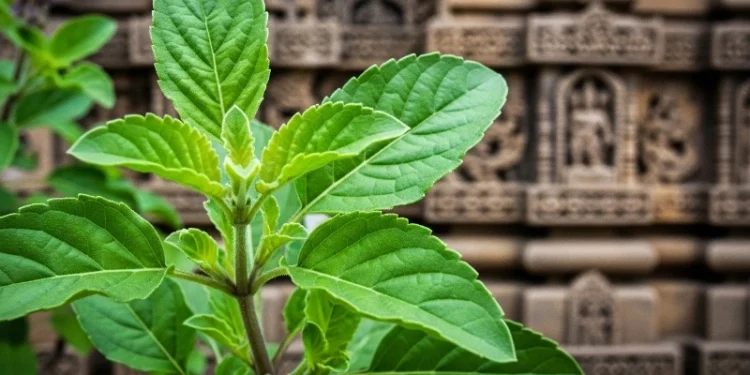Nepal is renowned for its incredible landscapes, ranging from the towering peaks of the Himalayas to the lush valleys and unique deserts. This diverse geography offers breathtaking views, rich biodiversity, and numerous opportunities for adventure and exploration.

This blog post will take you on a journey through Nepal’s remarkable landscapes, exploring the features, significance, and beauty of each region.
1.The Majestic Himalayas: The Roof of the World
Overview of the Himalayas
The Himalayas are the most prominent feature of Nepal’s landscape, forming a natural border between Nepal and Tibet. These towering mountains include some of the world’s highest peaks, including Mount Everest, Kanchenjunga, and Lhotse.
Mount Everest: The Ultimate Challenge
Mount Everest, known as Sagarmatha in Nepali, stands at 8,848 meters (29,029 feet), making it the highest peak in the world. Climbing Everest is a dream for many adventurers and mountaineers.
Climbing Routes
There are two primary routes to summit Everest: the South Col route from Nepal and the North Ridge route from Tibet. Each route presents its challenges, including extreme weather, altitude sickness, and technical climbing skills.
Cultural Significance
Mount Everest holds significant cultural and spiritual importance for the local Sherpa people. It is considered sacred, and many climbers pay respects to the mountain before their ascent.
Diverse Mountain Landscapes
The Himalayan region features diverse landscapes, from rugged terrain and deep valleys to glacial lakes and alpine meadows. Each area offers unique ecosystems and opportunities for trekking, climbing, and wildlife viewing.
2.The Terai Region: Lush Plains and Wildlife
Overview of the Terai
The Terai region is located in the southern part of Nepal and is characterized by fertile plains and a subtropical climate. This region is known for its agricultural productivity and rich biodiversity.
Chitwan National Park
Chitwan National Park is one of the most famous wildlife reserves in Nepal, home to diverse flora and fauna, including the endangered Bengal tiger and onehorned rhinoceros.
Wildlife Safaris
Visitors can explore Chitwan National Park through jungle safaris, birdwatching, and guided tours. The park offers a chance to see wildlife in their natural habitat while promoting conservation efforts.
Cultural Experiences
In addition to wildlife, the Terai region is home to various ethnic communities, including the Tharu people. Visitors can experience their unique culture through traditional dances, music, and cuisine.
Agricultural Landscapes
The Terai’s fertile plains support agriculture, producing crops such as rice, sugarcane, and wheat. The agricultural landscapes create a patchwork of green fields, adding to the region’s beauty.
3.The Hill Region: Lush Valleys and Scenic Vistas
Overview of the Hill Region
The hill region of Nepal is characterized by rolling hills, terraced fields, and stunning valleys. This area is home to many of Nepal’s major cities, including Kathmandu and Pokhara.
Kathmandu Valley
The Kathmandu Valley is a cultural and historical hub, surrounded by beautiful hills and mountains. It features several UNESCO World Heritage Sites, including ancient temples, palaces, and traditional architecture.
Cultural Significance
The valley’s rich history is reflected in its architecture, art, and festivals. The fusion of Hindu and Buddhist influences creates a unique cultural tapestry that attracts visitors from around the world.
Pokhara: The Gateway to the Himalayas
Pokhara is known for its breathtaking natural beauty and serene lakes, making it a popular destination for trekkers and adventure enthusiasts. The view of the Annapurna Range from Pokhara is particularly stunning.
Adventure Activities
Pokhara offers a variety of adventure activities, including paragliding, boating on Phewa Lake, and trekking to nearby destinations like Ghorepani and Ghandruk. The region’s natural beauty enhances the overall experience.
4.The Desert Landscapes of Mustang
Overview of Mustang
Mustang is a unique region located in the northern part of Nepal, known for its desertlike landscapes and Tibetan culture. The area is characterized by high altitudes, arid terrain, and stunning rock formations.
The Forbidden Kingdom
Mustang was once a forbidden kingdom, isolated from the rest of Nepal. The area is rich in history, with ancient monasteries, cave dwellings, and unique architecture that reflects Tibetan influences.
Lo Manthang
Lo Manthang, the capital of Mustang, is a historical town with a rich cultural heritage. The town features ancient palaces, temples, and walls that have stood for centuries, offering a glimpse into its past.
Trekking in Mustang
Trekking in Mustang offers stunning views of the Himalayas, unique landscapes, and opportunities to experience the local culture. The Upper Mustang Trek is popular among adventurers seeking an offthebeatenpath experience.
5.The Unique Ecosystem of the Terai Grasslands
Overview of Terai Grasslands
The Terai grasslands are characterized by lush grasslands, wetlands, and forests. This ecosystem is essential for maintaining biodiversity and supporting wildlife habitats.
Biodiversity Hotspot
The grasslands are home to various species of flora and fauna, including endangered species like the Royal Bengal tiger and various bird species. The unique ecosystem plays a crucial role in conservation efforts.
Conservation Initiatives
Conservation initiatives focus on protecting these grasslands and their biodiversity. Community involvement and education are essential in ensuring sustainable practices and wildlife protection.
Cultural Heritage
The Terai grasslands are also significant for local communities who rely on agriculture and natural resources. Traditional practices, such as sustainable farming and conservation, are integral to their way of life.
6.The Unique Cultural Heritage of Nepal’s Landscapes
Preservation of Traditional Practices
The diverse landscapes of Nepal are not just natural wonders; they are intertwined with the cultural heritage of the people. Traditional practices, rituals, and customs are often influenced by the surrounding environment.
Festivals Celebrating Nature
Many festivals in Nepal celebrate the changing seasons, agricultural cycles, and the relationship between people and nature. These festivals reflect the importance of the landscape in daily life.
Art and Craft Inspired by Nature
The stunning landscapes of Nepal have inspired countless artists, artisans, and craftsmen. Traditional art forms, including painting, wood carving, and textiles, often draw inspiration from the natural beauty of the surroundings.
7.The Spiritual Significance of Landscapes
Sacred Mountains and Rivers
Nepal is home to numerous sacred mountains and rivers that hold spiritual significance for various communities. The Himalayas are considered the abode of gods, while rivers are revered as lifelines of life.
Pilgrimages and Sacred Sites
Many trekkers embark on journeys to sacred sites, such as the base camp of Everest or Muktinath, a revered pilgrimage destination. These journeys are not only physical challenges but also spiritual quests.
Mindfulness and Connection with Nature
The breathtaking landscapes of Nepal offer opportunities for mindfulness and reflection. Many people visit the mountains and serene lakes to reconnect with nature, find inner peace, and explore their spirituality.
8.Environmental Challenges and Conservation Efforts
The Impact of Climate Change
Climate change poses significant challenges to Nepal’s landscapes, particularly in the Himalayas. Glacial melting, changing weather patterns, and increasing natural disasters threaten both the environment and local communities.
Glacial Retreat
The retreat of glaciers affects water supply, agriculture, and ecosystems. Communities that rely on glacial meltwater face challenges in adapting to these changes.
Conservation Initiatives
Various conservation initiatives aim to protect Nepal’s unique landscapes and ecosystems. National parks, wildlife reserves, and communitybased conservation programs focus on sustainable practices and preserving biodiversity.
Community Engagement
Community involvement is crucial for the success of conservation efforts. Local communities play a vital role in protecting natural resources, promoting ecotourism, and ensuring sustainable practices.
9.Tourism and Adventure in Nepal’s Landscapes
Trekking and Adventure Tourism
Nepal is a premier destination for trekking and adventure tourism. The diverse landscapes offer a variety of trekking routes, ranging from easy walks to challenging climbs.
Popular Trekking Routes
Popular trekking routes include the Everest Base Camp Trek, Annapurna Circuit, and Langtang Valley Trek. Each route offers unique landscapes, cultural experiences, and breathtaking views of the Himalayas.
EcoTourism Initiatives
Ecotourism initiatives promote sustainable practices in tourism. These initiatives focus on minimizing environmental impact, supporting local communities, and promoting responsible travel.
Community Benefits
Tourism can provide economic benefits to local communities, offering opportunities for employment and supporting traditional crafts and practices. Sustainable tourism helps preserve the natural and cultural heritage of the region.
Conclusion: Embracing` the Incredible Landscapes of Nepal
Nepal’s incredible landscapes, from the towering Himalayas to the lush Terai plains, are a testament to the country’s natural beauty and cultural richness. These diverse regions not only offer stunning vistas but also hold deep cultural, spiritual, and environmental significance.
By embracing the unique features of Nepal’s landscapes, we can foster a greater appreciation for the environment, promote sustainable practices, and support local communities. As travelers and adventurers explore this beautiful country, they contribute to the preservation of its incredible landscapes for generations to come.
10.Frequently Asked Questions (FAQs)
1.What are the main geographical features of Nepal?
Nepal features the Himalayas, hills, Terai plains, and unique ecosystems, including deserts and grasslands.
2.What is the highest peak in Nepal?
Mount Everest (Sagarmatha) is the highest peak in Nepal and the world, standing at 8,848 meters (29,029 feet).
3.What are the popular trekking routes in Nepal?
Popular trekking routes include the Everest Base Camp Trek, Annapurna Circuit, and Langtang Valley Trek.
4.How does climate change affect Nepal’s landscapes?
Climate change leads to glacial melting, changing weather patterns, and increased natural disasters, threatening local communities and ecosystems.
5.What is ecotourism in Nepal?
Ecotourism promotes sustainable travel practices that minimize environmental impact, support local communities, and preserve natural resources.
6.What cultural significance do the Himalayas hold?
The Himalayas are considered sacred in Hinduism and Buddhism, often seen as the abode of gods and places for spiritual pilgrimage.
7.What wildlife can be found in Chitwan National Park?
Chitwan National Park is home to various species, including Bengal tigers, onehorned rhinoceroses, and diverse bird species.
8.What is the best time to visit Nepal for trekking?
The best time for trekking in Nepal is during the spring (March to May) and autumn (September to November) seasons when the weather is generally clear and mild.
9.How can local communities benefit from tourism in Nepal?
Local communities can benefit through employment opportunities, support for traditional crafts, and increased income from ecotourism initiatives.
10.What are some conservation efforts in Nepal?
Conservation efforts include the establishment of national parks and wildlife reserves, communitybased conservation programs, and education initiatives promoting sustainable practices.
Nepal’s incredible landscapes are not only a feast for the eyes but also a reflection of the country’s rich cultural heritage and environmental significance. By appreciating and protecting these natural wonders, we can ensure that Nepal’s beauty endures for generations to come.






